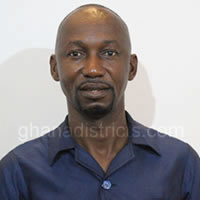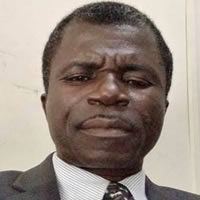Education in the municipality is handled by the Municipal Directorate of Education whose responsibility is the administration, monitoring and supervision of teaching and learning in the municipality. The municipality currently has both Basic and secondary level Schools. The municipality has been subdivided into Four (4) Circuits for the purpose of effective administration and supervision.
The following are a summary of trends for the period between 2010 and 2013:
Total number of education facilities in the Municipality has increased
Enrolment has risen at both basic and secondary levels due in part to the capitation grant policy of the National Government
The gender parity index (male gross enrolment rate versus female gross enrolment rate) in Kindergarten, Primary, and Junior Secondary schools has fluctuated between the years but is near 1.
Total number of teachers working at Kindergarten, Primary, and Junior Secondary schools has not kept pace with the increase in enrolment as the pupil to teacher ratio has risen each year.
Stakeholders in Educational Delivery
The delivery of education in the municipal assembly involves three major stakeholders namely: The private sector, The Municipal Assembly and The Missionaries. The table below indicates the stakeholder in the educational delivery in the Municipality.
From the table the above, it is evident enrollment has assume an increasing trend over a period of 2009/2012 for all the levels of education in the municipality the public and private schools. The increase in enrollment at the K.G and Primary level can be partly attributed to social intervention programmes like the School Feeding Programme. However, population increase and continues educational campaign by the Municipal Assembly and other stakeholder are the main causes of the increment in enrollment in all the levels
Gross Enrolment Rate (GER).
This shows the number (usually in percentage) of people of school going age who are in school.
From table… In the 2009/2010 academic year, Municipality recorded the GER of 81.5% which means that 18.5% of people who are of school going age are not in school. In 2010/2011 and 2011/2012 the Municipality recorded GER of 82.0% and 81.0% respectively. In the 2009/2010, 2010/2011 and 2011/2012 academic year, the GER for primary, J.H.S and was 79.0%, 70.1% and respectively.
Net Enrolment Rate (NER).
This is use to show the number of pupil in the class whose age officially correspond to the age group of that class.
The table below represents the sex segregation of (NER) of the municipality from 2009/2010 to 2011/2012 academic year. In 2009/2010, 2010/2011 and 2011/2012 the NER of municipality for kindergarten, Primary and J.H.S was 58%, 60.1% and 34.2% respectively.
Pupil-Teacher Ratio (PTR).
This is use to determine the number of pupil per teacher. For example, from table…., the PTR of kindergarten in 2009/2010 academic year was 25.9%. This means that the ratio of teacher to pupil is 1:25.9. Thus every teacher handles 25.9 pupil. The table below shows the PTR of the Municipality for kindergarten, Primary, JHS and SHS for the 2009/2010, 2010/2011 and 2011/2012 academic year. In 2009/2010 and 2010/2011, the PTR for kindergarten and Primary were 25.9 and 25.2 whiles that of that of S.H.S and S.H.S was 12.2 and 20.2 respectively.
BECE Performance
The BECE performance of candidates presented for the examination has increased progressively from 57% pass rate in 2009/10 BECE examinations to 61.7% pass rate in the 2011/12 examinations. Consequently, there has been an increase in the pass rate by core subjects such as English and Mathematics, but saw a reduction in Science from 65.7% in 2009/10 to 61.5% in 2011/12.
The Municipality registered Thousand and fifty five (1055) candidate of which thousand and forty seven took part in the examination, Nine (9) were absent for various reasons. Out of this number;562 were boys 485 were girls. The total number passed on Aggregate 6-30 was 839 representing 80%.
The number of Boys passed is 453 representing 80.6% and 386 for girls representing 79.6%. 25candidates scored between Aggregate 6-9; made up of 16 boys and 9 girls. The total number of schools that wrote the exams was 42 made up of 28 Public Schools and 14 Private Schools. 8 Public Schools scored 100% while 10 Private Schools scored 100%. No School scored 0%.
The candidates performed well in Ghanaian Language and integrated Science with 82.1% and performed low in English language with 68.7%.
The School Feeding Programme
The Municipal has since the inception of the school feeding programme been implementing it. With a humble beginning of two schools, the municipality as at the end of 2013 had the programme in ten schools. A total of 1955 Pupils are under the programme. The table below shows the schools and number of pupils who benefited from the programme for the period 2010 – 2013.
Post-Secondary Education Institutions
The municipality has one Integrated Community Centres for Employable Skills (ICCES) at Dwease which handles vocational subjects.
Education Structures
The Education Directorate has a number of structures for the management of Basic Education System. Prominent among them are:
Municipal Education Planning Team (MEPT): This unit carries out community sensitization and the training of facilitators.
Municipal Teacher Support Team (MTST): Organizes in service training, workshops in schools and at cluster centres to sharpen and consolidate the instructional skills of teachers.
The Girls Education Unit (GEU): The unit undertakes sensitization programmes on the importance of girls’ education.
The Science Technology and Mathematics Education (STME): focuses on creating awareness of the need for girls to study science, Mathematics and Technical subjects.
The School Health Education Programme (SHEP): The unit designs strategies for the upkeep and maintenance of good health in school.
Municipal Education Oversight Committee (MEOC): The MEOC was established by an Act of Parliament (GES Act 1995) exercises absolute responsibility over and authority over educational issues in the district. The Municipal Chief Executive chairs the MEOC.
Community Structures
Most communities in the municipality have Parent Teacher Associations (PTAs) and School Management Committees (SMC) which see to address some concerns in public schools.
Date Created : 11/18/2017 6:00:28 AM






 facebook
facebook twitter
twitter Youtube
Youtube TOLL FREE 0800 430 430
TOLL FREE 0800 430 430 +233 593 831 280
+233 593 831 280 GPS: GE-231-4383
GPS: GE-231-4383 info@ghanadistricts.com
info@ghanadistricts.com Box GP1044, Accra, Ghana
Box GP1044, Accra, Ghana